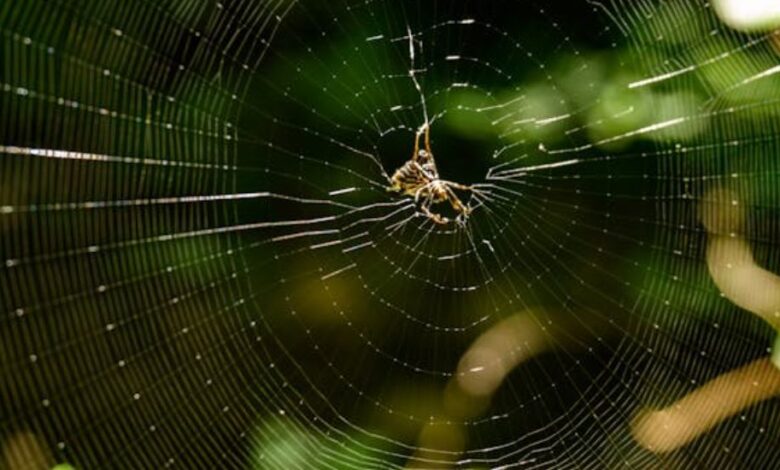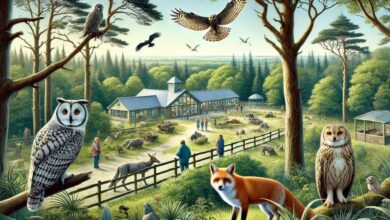Spider Web Funnel Ecosystem Business Map: A Comprehensive Guide

In the evolving world of business strategies, new models emerge to help companies navigate increasingly complex ecosystems. One such model is the “spider web funnel ecosystem business map.” This concept draws a parallel between the intricacies of a spider web and the interwoven relationships between businesses, consumers, stakeholders, and resources. Much like how a spider’s web serves multiple purposes—capturing prey, creating a safe retreat, and adapting to environmental changes—the spider web funnel ecosystem business map represents a structured yet flexible approach to modern business management.
In this article, we will delve into what the spider web funnel ecosystem business map entails, how it functions, and why it is becoming a popular metaphor for businesses aiming to thrive in today’s competitive marketplace.
What is a Spider Web Funnel Ecosystem Business Map?
At its core, the spider web funnel ecosystem business map is a metaphorical framework used by businesses to visualize and structure their internal and external relationships. The spider web represents the interconnected nature of various business components such as supply chains, partnerships, customer relationships, and technological infrastructure. The “funnel” aspect of the model reflects how businesses streamline these elements toward achieving central objectives, such as revenue growth or innovation.
Much like a spider web, this model highlights the importance of having a central hub from which everything radiates outward. In a business context, this could be a core product, service, or even a technology platform that anchors the entire ecosystem. The spokes of the web represent various aspects of the business, from customer interactions to supplier relationships, and the flexibility of the web allows for adaptation to market changes and external pressures.
The Spider Web as a Business Ecosystem
A spider web is a complex, yet beautifully structured, device used for multiple purposes, including catching prey, shelter, and communication. In the context of a business, the web symbolizes the intricate network of partnerships, customer touchpoints, and operational processes. Each thread of the web represents a different relationship or function, and like a spider that repairs its web regularly, businesses must constantly refine and maintain these relationships.
The funnel component is critical here. It suggests that while the ecosystem is wide-reaching and complex, everything is filtered down toward a central goal. Whether it’s sales, customer acquisition, or innovation, the funnel ensures that the business ecosystem remains aligned with its strategic objectives.
Key Components of the Spider Web Funnel Ecosystem Business Map
1. Central Hub (Core Offering)
At the heart of the spider web funnel ecosystem is the central hub. This could be a company’s primary product, service, or platform. In the same way a spider relies on the center of its web for control and safety, a business relies on its core offering to drive growth and innovation. Every interaction within the ecosystem, from marketing to customer service, is anchored by this central hub.
2. Spokes of the Web (Business Relationships)
The spokes radiating from the center of the web symbolize the various relationships that are critical to the business. These could include:
- Supply Chains: The businesses and vendors that provide the raw materials or services needed for production.
- Customer Channels: The various ways in which a business interacts with its customers, whether through digital marketing, direct sales, or retail outlets.
- Partnerships: Alliances with other companies that can help expand market reach or enhance product offerings.
3. Funnel (Process Optimization)
The funnel aspect of the spider web ecosystem business map refers to the way businesses streamline processes to drive outcomes efficiently. This could be seen in how companies filter customer interactions through lead generation to eventual sales. Much like a funnel that narrows down from a wider opening, this model ensures that businesses focus on the most valuable opportunities.
How the Spider Web Ecosystem Adapts
One of the most fascinating aspects of the spider web funnel ecosystem business map is its adaptability. Just as spiders frequently rebuild their webs to optimize prey capture, businesses must constantly adapt to changes in the market, technology, and consumer behavior. Flexibility is built into the web itself, allowing companies to pivot quickly when new opportunities arise or when disruptions threaten their existing models.
For example, businesses today face rapidly evolving technological landscapes. By using a spider web funnel ecosystem map, companies can stay ahead by quickly integrating new technologies or adjusting their strategies to meet changing consumer expectations. The web, in this sense, is both a safety net and a launching pad for growth.
Advantages of the Spider Web Funnel Ecosystem Business Map
1. Interconnectedness
One of the key strengths of this model is that it emphasizes the interconnectedness of different business components. Rather than treating departments or functions as separate silos, the spider web ecosystem map encourages businesses to view every aspect as part of a larger whole. This leads to better communication, collaboration, and ultimately, efficiency.
2. Centralized Control with Distributed Responsibility
In a traditional top-down business model, control is highly centralized, and information flows one way. In the spider web funnel ecosystem, while there is still a central hub, the responsibility is distributed across the web. This makes it easier for businesses to remain agile and responsive to changes without losing sight of the big picture.
3. Resilience
Like a spider’s web, which can endure considerable damage and still function, a well-constructed business ecosystem is highly resilient. Whether it’s a supply chain disruption or a shift in consumer demand, businesses can absorb shocks and continue to operate efficiently.
Implementing a Spider Web Funnel Ecosystem Business Map
Creating and implementing a spider web funnel ecosystem business map begins with identifying your central hub. What is the core of your business? Is it a product, service, or platform? Once this is defined, businesses can start mapping out the key relationships that radiate from this central point. These could be internal, such as departments and processes, or external, such as suppliers, customers, and partners.
From here, the next step is to create a “funnel” by identifying the processes that will filter and streamline these interactions toward specific outcomes. This could involve optimizing supply chains, refining marketing strategies, or enhancing customer service interactions.
Finally, businesses must remain flexible, continuously adapting their web to meet new challenges and opportunities. Much like a spider’s web that is constantly being repaired and adjusted, businesses must be proactive in refining their ecosystem to remain competitive.
Conclusion: The Future of Business Strategy
The spider web funnel ecosystem business map is a powerful metaphor for how modern businesses can thrive in an interconnected, complex world. By emphasizing the central role of a business’s core offering and understanding the importance of relationships, adaptability, and resilience, companies can build ecosystems that not only survive but thrive in today’s dynamic markets.
Much like a spider that relies on its web for survival, businesses today must weave intricate, adaptable ecosystems to capture value and navigate the ever-evolving business landscape. The spider web funnel ecosystem business map provides a structured yet flexible framework for achieving long-term success.



